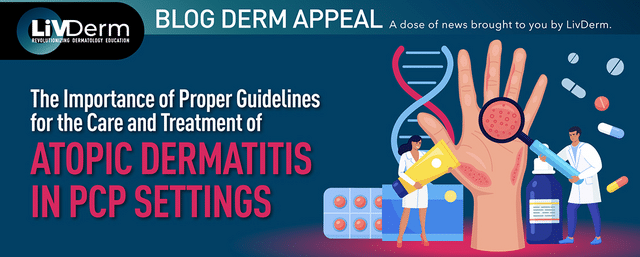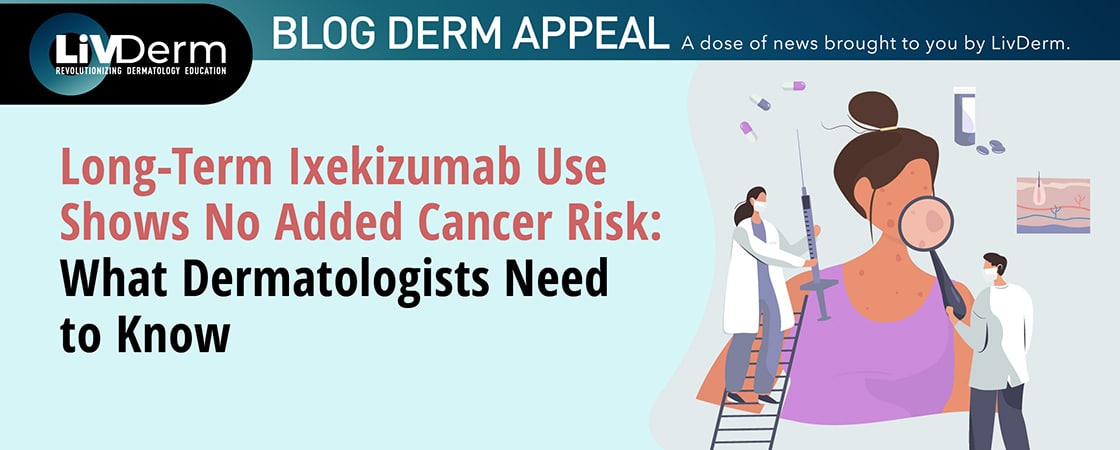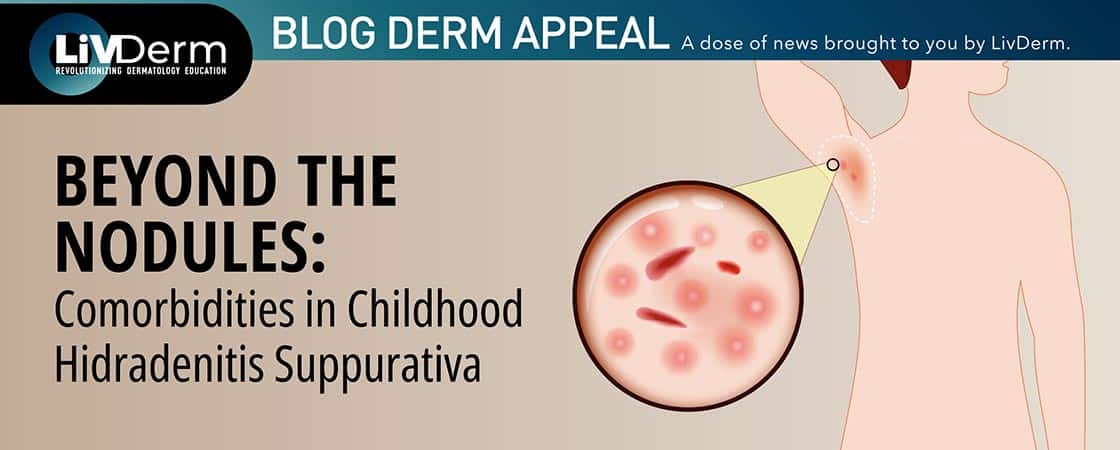Understanding Atopic Dermatitis and its Impact on Patients
Atopic dermatitis (AD), is a chronic, inflammatory skin condition that often begins in childhood and can last through to adulthood. It is estimated that approximately 9.6 million children in the U.S. have AD, as do approximately 16.5 million adults.
Beyond the rash, AD can significantly diminish quality of life through relentless itching, sleep disruption, depression, and social isolation. Patients often describe the mental and physical agony of uncontrollable flare-ups, with simple activities like bathing and dressing becoming dreaded rituals. Furthermore, AD is often associated with other comorbid conditions, including asthma, rhinitis, and food allergies.
The Role of Primary Care Physicians in Managing Atopic Dermatitis
Primary Care Providers (PCPs) increasingly serve vital roles in both ongoing care of AD and triaging acute flares. In many cases, it falls on them to provide initial diagnoses, prescribe treatment, and determine when specialist referral may be warranted based on disease severity. However, many PCPs indicate a lack of confidence in AD care. A recent review conducted by Alqahtani et al. found that many PCPs report not having received sufficient training on AD during their residency. As a result, many do not feel equipped with the proper knowledge and guidelines to treat their patients, especially those in the pediatric patient group. Furthermore, they may be unaware of common comorbidities like sleep disturbances, allergies, asthma, and mental health issues that require unique management. This lack of knowledge and subsequent disease management often leads to patients feeling dismissed when certain quality-of-life concerns go overlooked.
With the prevalence of AD, along with the continued development of novel treatments and therapies, it is essential that PCPs are fully equipped to optimize primary care management of this condition. Additionally, in many cases, PCPs have already established long-term patient relationships, therefore, if properly equipped, they have unparalleled opportunities to dramatically improve outcomes if given the necessary skills and resources.
Preferred Atopic Dermatitis Treatment Options in Primary Care Settings
The recent review conducted by Alqahtani et al. examined 15 articles that studied the management of AD in adults and children in PCP settings. The authors found that overall, “The use of TCS (topical corticosteroids) by PCPs was common, but they also overprescribed nonsedating antihistamines, favored low-potency drugs, and avoided TCIs (topical calcineurin inhibitors).”
Although in most instances, TCS are often the first line of defense against flare-ups in AD, the authors noted that up to 83% of parents of children with AD are apprehensive about the use of TCS, which can greatly and negatively impact treatment outcomes. They add that PCPs also preferred lower potency TCS, such as hydrocortisone, and that this is likely due to concerns surrounding side effects, noting also that the relatively high levels of TCS phobia by PCPs may be attributed to parental TCS phobia.
According to the review, as with TCS, oral antihistamines were also found to be frequently recommended by PCPs. TCIs on the other hand, were not, and this is possibly due to concerns surrounding lymphoma adverse effects.
Concerning emollients, PCPs often recommended this form of care as regular application of emollients can reduce symptoms and lower the requirement for topical anti-inflammatory drugs.
The authors concluded by stating that “there are gaps in knowledge and management of critical topics such as prescribing TCIs and understanding the safety profiles of TCS when it comes to treating adult and pediatric atopic dermatitis. Future research in this area is urgently needed because the current systemic assessment is mostly restricted to small studies that assess prescribing behaviors with scant information describing nonmedication management.”
The Need for Clear and Comprehensive Guidelines in PCP Settings
PCPs require access to clear, in-depth AD guidelines in order to avoid detrimental knowledge gaps. Though national guidelines exist, many need more specifics for real-world primary care application. PCP guidelines should provide recommended diagnostic criteria and evaluation workflows to facilitate catching cases early. Guidance is needed on identifying red flags requiring referral, accounting for common comorbidities, and ongoing monitoring and evaluation. By arming PCPs with tailored, clinically oriented standards, we can maximize appropriate autonomous management while determining when specialty input is advisable.
In addition to properly set out guidelines, a 2021 review suggested that PCPs may also benefit from the following: their patients consulting with a dermatology-trained nurse, pairing clinical education with expert consultation, pairing trainees with clinical mentors, pairing clinical education with a treatment guide, and providing an eczema action plan. Their findings were based on the review of 145 articles aimed at identifying possible interventions that could improve AD management in PCP care settings.
Educating PCPs on Updated Guidelines and Best Practices for Atopic Dermatitis Care
A 2015 article published by Eichenfield et al. posited that AD treatment guidelines were written primarily for the use of specialists in the field and lacked certain elements that would make them more useful to PCPs. Their article therefore set out to evaluate such guidelines and present them into a more streamlined severity-based treatment model specifically for PCPs. Such educational material can help PCPs implement treatment plans for each patient based on disease severity, possible comorbidities, triggers, as well as other associated factors.
Educating PCPs on the latest guidelines and best practices for AD care is crucial in ensuring optimal patient outcomes. Updated guidelines produced with PCPs in mind provide evidence-based recommendations that help guide them in diagnosing and treating AD effectively. These guidelines should encompass various aspects of care, such as assessment tools for disease severity, appropriate use of TCS and non-steroidal treatments, evaluation of the various available treatments and when best to utilize each, identification and management of triggers and comorbidities, and strategies for long-term maintenance therapy.
By staying informed about these updated guidelines and best practices, PCPs can ensure that they are providing their patients with the most up-to-date and effective treatment options.
Further Tools and Resources
For further guidance on evaluating and managing AD and other common pediatric skin diseases, explore LiVDerm’s MOPD Foundations of Pediatric Dermatology Certificate Course. Designed for pediatricians, physician assistants, nurse practitioners, registered nurses, residents, and other health care professionals, this completely online and self-paced program delivers essential insights from renowned pediatric dermatology experts. Join today to gain applied knowledge on current best practices that you can integrate into your practice right away when caring for young AD patients.
Sources:
- https://www.cureus.com/articles/182039-assessment-and-management-of-atopic-dermatitis-in-primary-care-settings-a-systematic-review#!/
- https://nationaleczema.org/research/eczema-facts/
- https://www.jacionline.org/article/S0091-6749(22)01653-0/fulltext#:~:text=We%20emphasize%20the%20important%20information,infectious%2C%20endocrine%2C%20autoimmune%2C%20and
- https://www.sciencedirect.com/science/article/abs/pii/S1876285921003612
- https://www.researchgate.net/publication/280693201_Translating_Atopic_Dermatitis_Management_Guidelines_Into_Practice_for_Primary_Care_Providers
- https://www.ncbi.nlm.nih.gov/pmc/articles/PMC8578192/

















